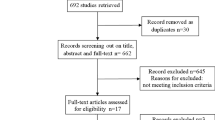Summary
A study on the economic effects of naturally acquired trypanosomiasis in sheep and goats over a period of 35 weeks under range conditions in the Kiboko area of Kenya indicated that the financial loss from reduced weight gain and death amounted to 36·2 and 62·9 Kenya shillings per head for goats and sheep respectively. This was derived from the weight loss through death together with the reduced weight gain of the survivors compared with treated animals. The study also compared the efficacy of 3 drug regimes in goats and suggests that although quinapyramine (prophylactic) B.vet.C. provided the longest protective period, the weight increase of the stock under isometamidium chloride treatment was higher. The benefits of the drugs used are discussed.
Résumé
Une étude sur les incidences économiques des trypanosomoses naturellement acquises par des chèvres et des moutons entretenus sur des pâturages naturels pendant 35 semaines, dans le région de Kiboko au Kenya montrent que les pertes financières par perte de poids et mortalité atteignent respectivement 36,2 et 62,9 shillings kenyans par tête. L'étude a également porté sur l'efficacité relative de trois traitements médicamenteux chez les chèvres; il en résulte que bien que la quinapyramine (prophylactique) B et C donne une protection de plus longue durée l'augmentation de poids chez les animaux traités au chlorure d'isometamidium a été plus élevée.
Les bénéfices résultent de l'utilisation de ces corps sont discutés.
Resumen
Se llevó a cabo un estudio económico, sobre los efectos de la tripanosomiasis adquirida en forma natural, en ovejas y cabras en el área de Kiboko en Kenya. El estudio tuvo una duración de 35 semanas bajo condiciones de campo. Los resultados indicaron, que la pérdida monetaria debida a bajos aumentos de peso y muertes, tuvo un monto de 36.2 chelines (moneda de Kenya) por cabeza para cabras y ovejas respectivamente. Como parte del estudio, se comparó la eficacia de tres regímenes quimioprofilácticos y quimioterapéuticos en cabras. La quinapiramina (profiláctica) B vet C proporcionó el período más largo de protección, pero el incremento de peso de los animales bajo tratamiento con cloruro de isometamidio fue mayor. Se discuten los beneficios de las drogas usadas.
Similar content being viewed by others
References
FAO/WHO/OIE (1962).Animal Health Yearbook, 7th edn. Rome, 1963.
Finelle, P. (1974).World Animal Review,10, 15–18.
Krammer, J. (1966).Bulletin of Epizootic Disease in Africa,14, 423.
Pratt, D. J., Greenway, P. J. &Gwynne, M. D. (1966).Journal of Applied Ecology,3, 369–382.
Stephen, L. E. (1970). Clinical manifestations of the trypanosomiases in livestock and other domestic animals. InThe African Trypanosomiases (ed. Mulligan), pp. 774–792. George, Allen and Unwin, London.
Author information
Authors and Affiliations
Rights and permissions
About this article
Cite this article
Griffin, L., Allonby, E.W. The economic effects of trypanosomiasis in sheep and goats at a range research station in Kenya. Trop Anim Health Prod 11, 127–132 (1979). https://doi.org/10.1007/BF02237788
Accepted:
Issue Date:
DOI: https://doi.org/10.1007/BF02237788




